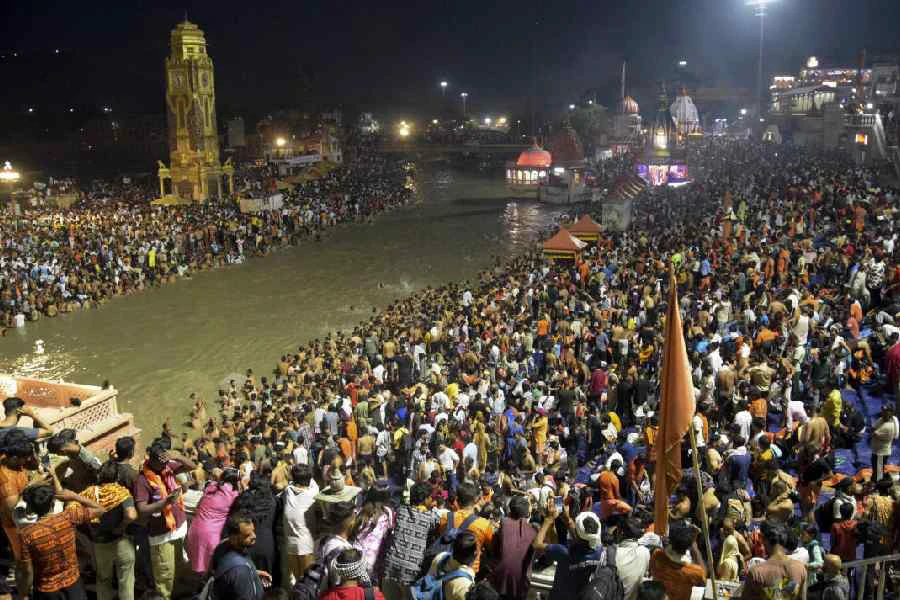As Uttarakhand continues to be overrun by Kanwar Yatra devotees, with numbers rising exponentially year on year, environmentalists and locals have noted with alarm the lack of even basic waste management facilities in the hill state.
Many residents and environmentalists have complained that the roads are so littered with plastic, solid and faecal waste that it is difficult to even step out of homes.
The Kanwariyas enter the state from different places, including Haridwar, Roorkee and Dehradun, and reach Haridwar town on foot to collect the holy water of the Ganga. As the number of pilgrims increases every year, there have been calls for a robust waste management system in the hill state.
“Governments these days are more bothered about creating records instead of focusing on management. They know that devotees will keep visiting Haridwar every other month, but make no effort to have in place a waste management system. Our long-pending demand to set up a Waste Management Commission has been ignored,” said Anup Nautiyal, a social activist in Dehradun.
“It is not that the Kanwariyas come to the state for a day and go back. Many of them also visit other places and temples and stay in the state for days. Like any human, they too generate plastic, solid, biomedical and faecal waste,” he said.
“Having a few toilets or adding some more conservancy staff is not enough. We also need to worry about noise pollution as the Kanwariyas come here with huge DJs. According to our studies, the number of Kanwariyas will increase by 60 per cent in the next five-seven years,” Nautiyal, who runs an NGO involved in environment advocacy, said. “The entire environmental system seems to have collapsed in the state in the absence of an end-to-end system. Finally, all the waste generated these days is flowing into the Ganga.”
Some experts pointed out that most of the waste generated or spilt by visitors during monsoon is washed away by the rain, but the amount becomes overwhelming – three to four times more – during the Kanwar Yatra.
“I travelled from Dehradun to Haridwar two days ago and found only two temporary toilets on the way. The government has said that 3.56 crore Kanwariyas have so far collected the water of the Ganga from Haridwar town and returned. Obviously, over a crore more are expected to come before the Yatra ends on August 9. Those living on the edges of roads have told me that they are unable to come out of their houses because of the faecal waste all around,” said a local journalist who didn’t want to be named.
Pramendra Singh Dobhal, the senior superintendent of police of Haridwar, said that on an average, 50 lakh Kanwariyas were collecting holy water every day for the past two-three days.
Nandan Kumar, the municipal commissioner of the Haridwar Nagar Nigam, told reporters that the civic authorities were gearing up for the 2027 Ardh Kumbh, which would be celebrated as a Mahakumbh, and that the Kanwar Yatra was only
the “prologue”.
Kumar said: “We have divided Haridwar into seven zones for the purpose of keeping it clean during the Kanwar season and also as a lead-up to the 2027 Kumbh. Several inspectors have already been deployed for this purpose. Over 1,000 workers have been engaged to keep the towns and rivers clean. There are two conservancy staff for every 50m stretch. Dustbins and compostable bags have been kept at several places. We have also distributed compostable bags among shopkeepers so that they don’t throw waste in the open.
“Over 300 makeshift toilets have been installed across Haridwar city and conservancy staff are cleaning them in three shifts. We had a bio-composter, but it is not working. We have prepared a detailed project report for a dumping compaction plant. On an average, Haridwar city produces 300 to 350mt of waste, but it goes up to 1000mt during the Kanwar Yatra and other festive seasons.”
Nautiyal, the social activist, said about 30,000mt of waste was generated during the 2023 Kanwar Yatra. “We don’t have the data for 2024, but the number of Kanwariyas has gone up sharply this year. While religious tourism is vital for our state, it is equally important to ensure waste minimisation, collection and recycling.”
